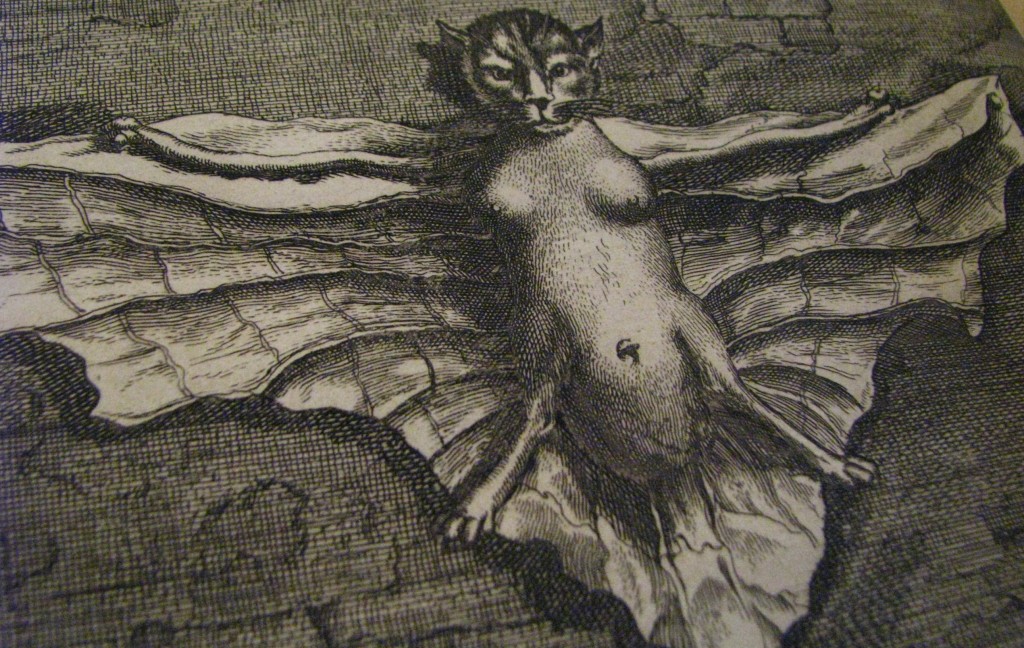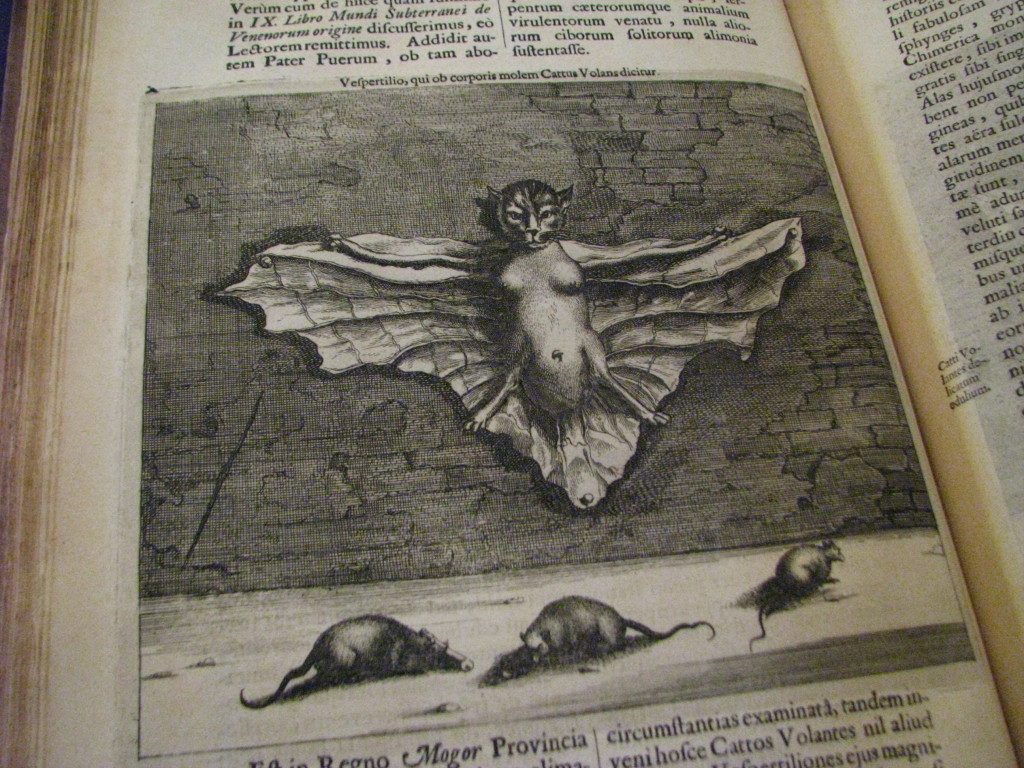
One of the reasons Athanasius Kircher is one of my favourite historical “scientists” (quotation marks absolutely necessary) is because he did things like write a whole book about China without ever going there. Which is why you find things like this creature depicted above, described as the “Cattus Volans” in Latin, or “Flying Cat.” According to the text of China Monumentis (and my mediocre Latin skills),
Dicebatur et ibidem in condensis montium arboris Cattos Volantes videri capique.
“It is said that, in the boughs of treetops of that place, Flying Cats can be seen and caught.”
And this is, apparently, what they look like.
One wonders what was actually being described to him. Fruit bats, perhaps? Flying squirrels? We may never know.
Happy Monday, everybody.
***
Richard Ford Burley is a writer, library worker, and doctoral candidate in English at Boston College, where he’s studying remix culture and the processes that generate texts. In his spare time he writes about science, skepticism, and feminism (and long-dead pseudo-scientists) here at This Week In Tomorrow.

